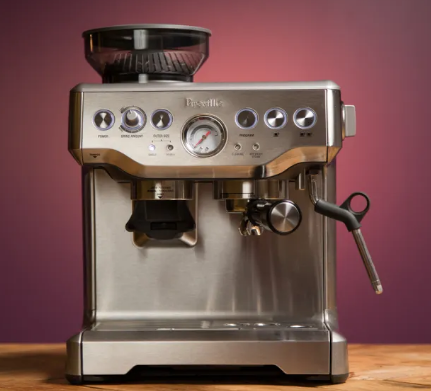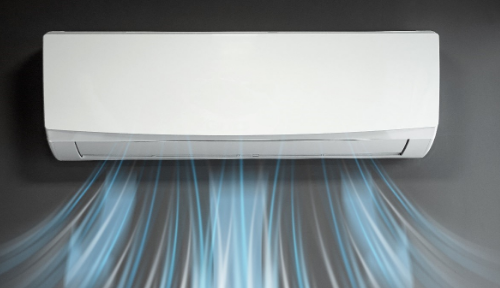Many people stop at coffee shops to buy one because they enjoy coffee so much. Using a coffee maker would save you a ton of money even though visiting your neighborhood shops might be a smart idea. Fortunately, there is a Breville Coffee Maker, and it has a solid reputation for providing excellent coffee and drinks.
Breville Coffee Maker has received many positive reviews for its design, liquid quality, and user-friendly interface. But have you ever wondered how a coffee maker is cared for?
You won’t need to worry, as this article will explain the machine in more detail and show you how to descale it.
What is descaling, to begin with? Descaling is the process of removing the machine’s accumulated minerals. The hardness of the water is attributed to these minerals, which could harm the coffee maker.
Table of Contents
What Would Happen If I Don’t Descale My Coffee Machine?
- The machine could be damaged by accumulated minerals. What might occur on this list is included?
- The full flavor of the coffee cannot be extracted if the machine cannot reach its ideal brewing temperature.
- A good water flow may be hampered by the buildups. The machine might stop working if it is not removed.
- You won’t be able to enjoy coffee at the proper temperature.
When to Descale a Coffee Machine?
The list provides the things an owner should look out for to check if a descaling is due:
Physical Build-Up
- Whether you use a kettle, coffee maker, or espresso machine, a heat-conducting material comes into contact with water. The metal base inside a kettle is shown here. Water flows through this rod in the majority of coffee makers.
These regions are much more likely to contain mineral deposits. Build-ups will inevitably occur; once you begin monitoring it, you might even notice them.
Delayed Heating
- You’ll need to pay close attention before you notice this impact because it’s fairly subtle. However, if scales have been building up for a while, you might experience heating delays. This is due to the fact that water is no longer in direct contact with a heat-conductive surface.
The power warms the metal, but it also warms the mineral deposits, which ineffectively warm the water. You may get cooler coffee or have to wait longer for it to be ready, depending on how your coffee maker operates. In either scenario, look for mineral deposits.
Taste Variation
- Since mineral build-ups are being poured into your machine, having a different taste in your coffee may be a sign that it needs to be descaling. There are both good and bad news in situations like this. The bad news is that the machine produces poor-quality coffee, and most of that coffee is impacted by build-ups.
The good news is that these mineral encrustations are simple to remove and have not yet begun to harden. Every time the owner makes a cup of coffee, the maker’s self-descaling occasionally results in a flavor difference.
The Coffee Machine Overworks
- If you notice that the plastic components of your coffee maker become hotter than they should be or if your coffee maker starts making noises that it didn’t before, check your pipes for obstructions. The only thing that can clog the pipes of a typical coffee maker are stray coffee grinds and scales.
There’s a good chance you’ll see white deposits inside the hot pipes if your machine is overworking. However, an overworked coffee maker might not always be the result of clogged pipes. Another possibility is that the wiring of the device is flawed.
Prior to hiring a specialist to check your coffee maker, you should check for deposits first, which is free of charge.
With all of these considerations in mind, we should move forward with descalement of our cherished Breville Espresso Maker.
How to Descale Breville Espresso Machines?
Before you can descale your Breville, you’ll need some vinegar or descaling solution. An inexpensive, effective descaling solution can be made at home by mixing equal parts vinegar and water. However, a ready-made descaling solution is also an option. The idea is to use something acidic because calcium and magnesium deposits are basic.
What You Will Need:
- Vinegar
- Water
Before We Begin: Unplug Your Coffee Machine.
You should unplug your coffee maker and let the water reservoir fill up.
Step 1: Fill Up the Reservoir
First, fill the reservoir of your Breville maker with 4 cups of white vinegar. Because it is so acidic, vinegar works well for descaling.
Afterward, pour warm water into the Breville coffee maker’s reservoir. Using a measuring cup marked in ounces or liters, mix 4 cups of water and 8 cups of white vinegar to create a potent cleaning solution if you are using a 12-cup Breville machine.
Use half vinegar and half water in a smaller coffee maker. Remark: Adding one cup of vinegar to a tank that is halfway full worked better for my Breville than adding two cups.
Plug in your machine and turn it on after adding the water and vinegar mixture.
Step 2: Rinse Your Coffee Maker
Allow the mixture to sit in the machine for about an hour. All of the mineral deposits that have accumulated over time are broken down and disintegrated as a result of what we do.
Step 3: Run a Descale Cycle
You may have a descale setting on your Breville, depending on the model. Just push and hold the Strength button for 5 seconds and it should read “Descale”.
If there is no special setting, simply turn on the device and brew the liquid as you would coffee.
Descale mode will be indicated on the machine’s display. Run the appliance until the entire volume of the coffee pot has been filled with the vinegar and water mixture.
Although your Breville will be making no coffee or espresso while you are descaling it, you can hear the water flowing through the machine.
All of the mineral deposits that would otherwise accumulate inside your machine will be cleaned out by the mix as it passes through it. Depending on the machine and the amount of scale buildup, this step can take longer than three minutes.
Put some clean water in the reservoir. For a second time, activate the descale mode by pressing and holding down the Strength button for 5 seconds. The vinegar odor and flavor should be eliminated as the water moves through the device.
Brew next until the machine is empty.
If you haven’t run a batch of white vinegar and water in a while, you might want to. By performing a second run, you can be sure that your machine removes any scale that wasn’t broken down during the first one. Rinse the apparatus once every drop of liquid has been removed.
Step 4: Repeat Steps 2-4 If Necessary
Refill your coffee maker with fresh water after emptying the used vinegar and water. After that, perform another water cycle on your machine. Repeat this several times until the machine is completely odor-free of vinegar.
Any vinegar residue can be eliminated from the system by running several cycles of clean water.
After that, you can make espresso or coffee as usual. You’ve just successfully used vinegar to descale a Breville coffee maker!
Conclusion
A coffee maker needs to be maintained at all times. To maintain the quality of your beverages, weekly maintenance is necessary. The products you will serve and the machine’s life can be protected by weekly checks for mineral deposits and 16-week descalings.
This is crucial for Breville coffee makers because they require maintenance in order to function properly. Cleaning and decalcifying a coffee maker are two distinct maintenance procedures.
Descaling your Breville coffee maker is a simple procedure that shouldn’t take more than 30 minutes to complete. However, if you’d rather, you can choose to buy a descaling solution. We advise using vinegar because it’s inexpensive and efficient at removing mineral deposits. Lemon juice also performs admirably and has the advantage of leaving a pleasant aftertaste, so even if some is left in the machine after rinsing, it won’t ruin your coffee.
FAQs
How Do I Activate the Descale Mode?
To activate Descale Mode, begin with the brewer plugged in and powered off, then press and hold the 8oz and 12oz buttons together for 3 seconds. Press the brew button when it begins to flash to begin the descaling procedure.
How Do I Remove the Descale Warning?
Remember, if you clean your machine and the light stays on, all you have to do is hold down the 8oz and 10oz for 5 seconds, and the light will turn off.
Can I Use Citric Acid to Descale My Machine?
You can indeed descale your machine using citric acid. Citric acid, however, might lead to residue accumulation. This might imply that it will take longer for the mineral deposits to dissolve and that you might need to descale more frequently as a result. Personally, I use white vinegar and discover that it consistently works for me.



MOST COMMENTED
How to
How to Clean Homedics Humidifier: Detailed Guide
How to
Are Humidifiers Good for Pneumonia? Complete Guide
How to
Can You Put Drano in a Dishwasher? (Facts & Safe Alternative)
How to
How to Turn Subtitles on Or Off on Peacock TV: 2023 Guide
How to
How to Get Rid of Hollow Arrow on iPhone? 2 Simple Ways
How to
How to Mirror iPhone to TV Without WiFi: Complete Guide
Computers, Tablets & Printers
The 5 Best Printers for Cricut in 2022